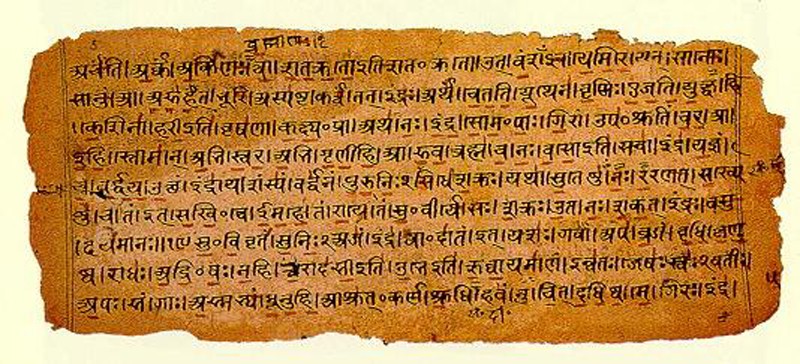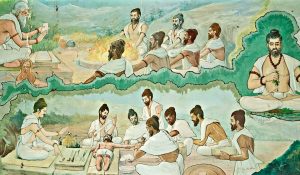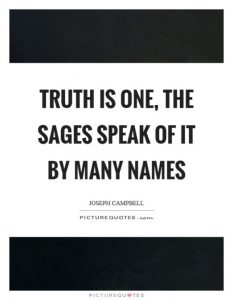What are Vedas?
The word “Veda” means knowledge. Vedas are the scriptures of all true knowledge in various stages of life, in all walks of life believed by the Hindus. Be it friendship, be it emotions, be it morals, ailment, business, sharing, enmity, belongings, love, faith, career whatever. Vedas are classified in two categories: Para Vidya (Knowledge of the worldly matters) and Atma Gyan (knowledge of self). We have in the Veda knowledge of God, Self, Nature, Cosmic order as also knowledge about social norms, ethnical conduct, marriage, food, health, objects of the world etc.
There are four Vedas. The oldest Vedic texts are those of the Rig Veda, dating from about the 1300’s B.C. These are mostly fabled poems written in praise of the great Vedic gods-Indra the Warrior, and the Panchmahabhutas –Akash (Space), Agni (fire), Jala (water), Vayu (air) and Prithvi (earth). The Yajur Veda is about formulae for sacrifice; sacrifice plays an important role in mankind, although the rituals associated with it have evolved over several thousand years of existence. The Vedic scriptures dictate the rules of sacrifice which are followed in highly structured methods. Sama Veda is about phrases for priestly chants, and Atharva Veda are verses dealing with peace and prosperity and the daily life of human society. The Vedas are also called Samhitas. They are mainly collections of verse and texts that provided the rituals of the holiest rites of the early part of formulation of religion.
The Vedic scriptures are written in the Sanskrit language. According to the Vedic history, they were written down thousands of years ago. The date, however, is not very important because, without a doubt, the knowledge contained in these scriptures was existing a long time before it was written down. Angiras (अंगिरस्) rishi is credited for formulating the fourth Veda called Atharvaveda. The Veda may be understood by simply accepting what the Veda says about itself. The Vedic self-understanding is amazing, at times even unbelievable to the modern reader, the modern reader needs to read, and re-read a few sentences for clarification. Many philosophies in it are confusing. The different opinions about the origin and history of the Vedic scriptures are due to the fundamental difference of views between the followers of the Veda and modern mundane scholars.
There are two important texts which were formulated later: long prose essays were written for the Brahmanas which explain the mythological and theological significance of the rites. After the Brahmanas came highly theoretical works called the Upanishads which explain inward reflection. The real meaning of growth in life is deep inner understanding of self. Upanishads are search for unity in existence. They gave rise to the development of Indian philosophy. The Vedas explore origins of life, highlighting the ideals of human existence, the goals that indicate the values. There is no dogma, no restriction of thought. The teachings come in words clear as crystal: ā no bhadrā kratavo yantu viśvatah: ‘let noble thoughts come to us from every direction’. That, indeed, is the essence of the Vedas.
Vedas teach us to follow truth, to accept nothing but the truth, which is one, though the wise describe it in various ways: ‘ekam sat viprāh bahudhā vadanti’ – that Truth or sat which is synonymous with being and becoming, with life and living in all its manifestations.
By the way, in the period of Vedic faith the term Hindu was not created. Vedas dint preach worshipping different deities, it was just not prevalent at that time. It is amazing to find evidences of a lot of work related to science and mathematics in that period. Lot of sages invented mathematical and scientific formulae. The Baudhayana sūtras are a group of Vedic Sanskrit texts which cover dharma, daily ritual, mathematics, Ayurveda, etc. It is surprising to note that the value of ‘Pi’ – the Pythagorean Theorem is mentioned in it much before Pythagoras invented it. The concept of God in the vedic times was primarily to describe different phenomenon occurring in the universe. The countless forms of creation manifest the Truth or Reality of God, which is imaginary. But beneath and beyond all the names of gods and goddesses, the idea is of one and only Universal Power!!
The sages for the sake of explaining created gods for representing different manifestation in the nature, such as wind, fire, rain, sun and moon. Apparently they identified 330 million different natural phenomenon and forms of energy and represented as different gods. But their ultimate goal was to make the common man understand the universe and its working.
Classical Hinduism seems to have evolved when Adi Shankaracharya united many different streams and cultures and sects evolved from vedic religion. Adi Shankaracharya felt it was necessary to modify the traditional religious practices in vedic religion and make is simpler and easier to identify with common masses. He ratified murti-puja i.e. worship of sculptures of God, so the people could easily identify different forms of god. He combined all different ideas and cultures under the single umbrella of Hinduism. The teachings from puranas became the core of Hindu religion with the guidance of vedas, upnishadas and other shastras. Many figures from Ramayana and Mahabharata represent incarnation of gods like Rama, Krishna, and Hanuman, which became popular worship idols.
The clear thrust of the Vedas is towards an unmistakable monism, which means a theory or doctrine that denies the existence of a distinction or duality in a particular sphere, such as that between matter and mind, or God and the world. At the end of so many prayers, the worshipper poses the question: “kasmai devāys havishā vidhema”, to which god do I offer my prayers? Vedas teach you that in an open, hypothetical situation there is no room for fanaticism. There is only one supreme power, which we identify as God. The supreme power speaks the same truth to people all around the world. The question is, when God speaks, what do we hear? Two people can listen to the same story and come away with very different meanings. We hear what we want to hear in order to believe our own ideas. People in different eras and cultures hear God differently, according to their own traditional and spiritual conditions.
In modern times, Maharishi Swami Dayanand Sarswati, the founder of Arya Samaj proliferated the teaching of the Vedas and he believed that the Vedas were for all human beings. In conclusion, the fundamental message from the Vedas is to do maximum good and to promote welfare of the world as a whole. Vedas teach us to promote physical, spiritual and social development of entire mankind without any distention of caste, colors, creed, religious race or sex. They promote universal brotherhood.















































